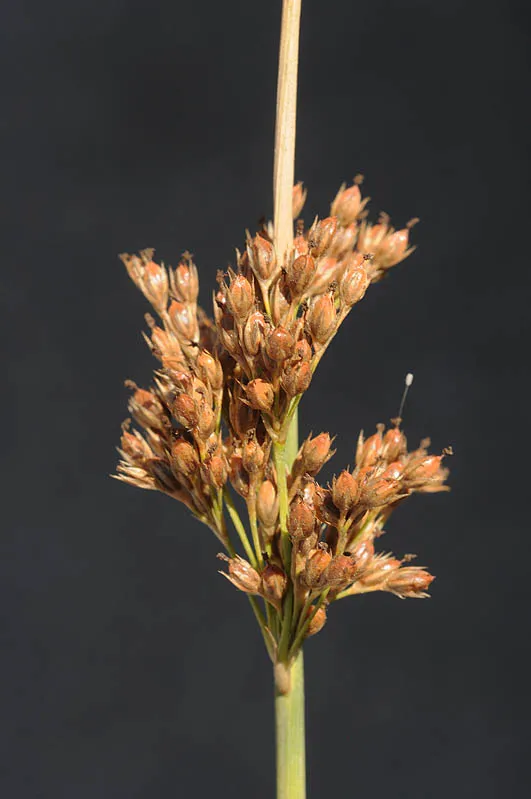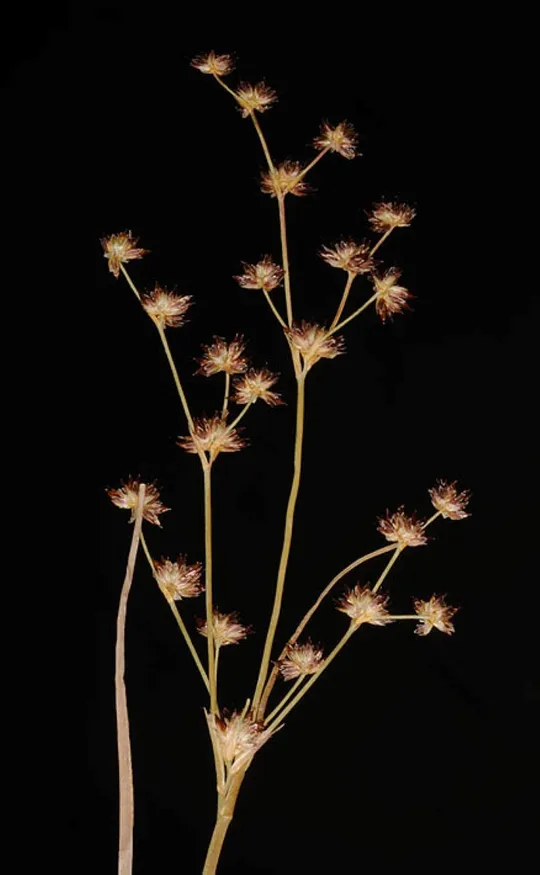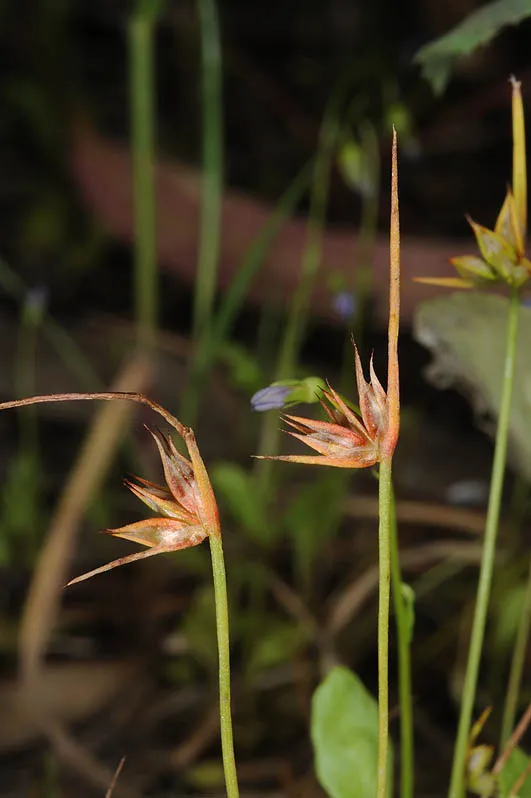Juncus sphaerocarpus

Juncus sphaerocarpus once grew in
wetlands in the Sharon (Poleg, Magdiel), Pleshet (Giv’atayim and Wadi Ayalon) and the Jezreel Valley (Gvat, En
Harod), and is extinct since the 1950s. A single specimen was found in Samaria at
Deir Dibwan in 1924 but has not been found since. J. sphaerocarpus was not found in the entire coastal plain since the 1950s, despite
the rare species survey conducted in the region. According to Danin (2004) it
also grew in the Golan Heights and the Judean Mountains. On 23March 2006, a
small population was found in a seasonal depression, on the roadside, near the
Ramat HaSharon cemetery; despite identification efforts, it is not clear if
these are specimens of J. sphaerocarpus or of J. bufonius, which is common in these habitats. The species may be
episodic in Israel and does not sustain permanent populations; its small seeds sink
easily in the marsh mud and are transported for long distances on the feet of aquatic
birds.
Winter ponds and humid seasonal small hollows.
For the genus – see Juncus articulatus. J. sphaerocarpus is one of the annual species in the genus and is very similar to J. bufonius. However, in the Floras of the regions it grows in,
it is considered a separate, independent species.
The Juncaceae plant family are externally similar
to the Gramineae (Poaceae): the species in both families have a graminoid structure,
fibrous roots, rhizomes (in the perennial species) and small greenish flowers
that are wind pollinated. Nevertheless, taxonomically, the Juncaceae are close to the Liliaceae
family and the features similar to the Gramineae (Poaceae) listed above,
indicate the convergence of the Juncaceae
as an adaptation to wind pollination and a tufted growth
form, that renews itself by intercalary budding from the base of the leaves and
stems and not from apical meristems. This type of growth is an adaptation
against consumption by herbivorous ungulates, as the plant renews itself from
its base. The Juncaceae flower consists of six tepals, six stamens and a three-celled ovary
with one style with three stigmas, and a fruit that is a simple capsule with multiple
seeds. Many features of the flower and fruit in the Juncaceae are similar to the Liliaceae, and differ
significantly from those in the Gramineae (Poaceae). Its structure is similar
to the Liliaceae flower, but is small and colorless due to its adaptation to
wind pollination (a rare feature found in the Liliaceae family as well).
Juncus sphaerocarpus is extinct from
winter ponds and moist hollows in the Sharon, in Pleshet and in the Jezreel
Valley, due to the disappearance of this unique habitat from most of the sites
in these regions, as a result of drainage, desiccation and urban development.
It is not endangered in the Mediterranean Basin, but is classified as a
critically endangered according to the IUCN in Switzerland and in the
Carpathian Mountains.
Efforts should be
made to propagate Juncus
sphaerocarpus in botanical
gardens or nurseries, from sources in neighboring countries. Some
patches of winter ponds and humid hollows on the coastal plain should be
restored and repopulated with J. sphaerocarpus.
Juncus sphaerocarpus is a widespread
species whose origin is Mediterranean, Irano-Turanian and Euro-Siberian, which
has now spread to North America as well. In the Middle East, it grows in Syria,
Lebanon, Cyprus, Turkey, Iran and Iraq. It is also found in Africa, Ethiopia
and in Morocco, but is not known from Egypt.
Juncus sphaerocarpus is a small annual herbaceous species characteristic of
winter ponds and moist depressions that once grew in the Jezreel Valley and
along the coastal plain. It is extinct since the 1950s due to the extensive
damage to its habitat and is not globally endangered.
Current Occupancy Map
| 1000 squre meter pixel | 5000 squre meter pixel | 10000 squre meter pixel | |
|---|---|---|---|
| number of observations | 0 | 0 | 0 |
| in total pixels | 0 | 0 | 0 |
| Family | Juncaceae |
| Classification | On the endangered species list |
| Ecosystem | Mediterranean humid |
| Chorotype | Euro-Siberian – Mediterranean |
| Conservation Site |
| Rarity |
1
6
6
|
|---|---|
| Vulnerability |
0
4
4
|
| Attractiveness |
0
0
4
|
| Endemism |
0
0
4
|
| Red number |
1
5.2
10
|
| Peripherality | 0 |
| IUCN category | DD EW EX LC CR EN VU NT |
| Threat Definition according to the red book | Endangered |
 Based on:
Based on:






